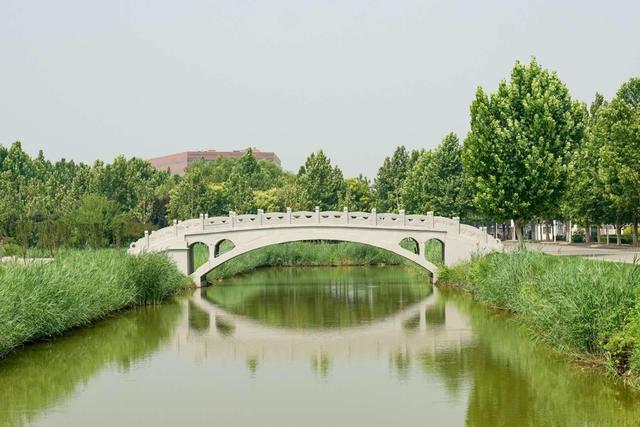The Story Behind the World's Longest 3D Printed Bridge

The 3D printed prefabricated concrete Zhaozhou Bridge. 【PHOTO: XINHUA】
By BI Weizi and Wang Xiaoxia
Apart from its academic prowess the Hebei University of Technology now holds Guinness World Record™ for the "Longest 3D Printed Bridge," winning the title on July 21, 2020.
The 3D printed prefabricated concrete bridge was built by the university's team of Professor Ma Guowei and features a total length of 28.15 meters and a span of 17.94 meters, which has attracted attention from industries and society at large.
Zhaozhou Bridge, which crosses the Jiaohe River in Hebei Province and is reputed to be the world's oldest open-spandrel arch bridge, was built around 1400 years ago by thousands of craftsmen. However, its 3D printed version was built by a group of young people using modern technology, but which none-the-less was fraught with difficulties. The 3D printing bridge project team was formally established in the second half of 2017. After topic selection and repeated demonstrations, the project officially started in early 2018, and was not fully completed until September 30, 2019.
Why does it take so long to "print" a small bridge less than 30 meters in length?
"The major problem is that there is no precedent example to learn from," said the project coordinator, Dr. Wang Li from Hebei University of Technology. The designing and production process generally includes modular design, 3D printing, assembly construction and other procedures, which are respectively handled by different teams.
Doctor Wang said the team's main concept was to apply 3D printing intelligent construction to prefabricated buildings, so they had to divide the entire bridge into multiple modules and make them separately.
Another challenge was how to divide the bridge into sections? How many modules were needed and in what size? How should the module design be adjusted? How should the printing parameters be configured to meet the material characteristics, especially the performance of cement over time, to ensure printing accuracy and ease of assembly? These are some of the problems the entire team had to wrestle with.
It is obvious that each and every step of the process is interconnected. Every minor change required some adjustments in the following procedures.
Thus, the intersection of disciplines greatly promoted the progress of the project. The entire team was able to integrate the module design with subsequent assembly work, so that the problems could be predicted at the beginning, and the assembly problem was solved from the initial module design stage, which greatly improved work efficiency.
For example, a team member who majors in design, but has worked on construction plans for years, can handle both designing and construction work efficiently.
In addition, team members with an educational background in automation disciplines designed sensors to monitor the safety performance of the bridge. The data on the impact of temperature, foundation settlement, and water level on the bridge was continuously monitored within 24 hours and uploaded to the cloud.
Team members with interdisciplinary experience played an important role. They acted as a "bridge" between different technical categories and teams in the context of new technologies, said Wang.







